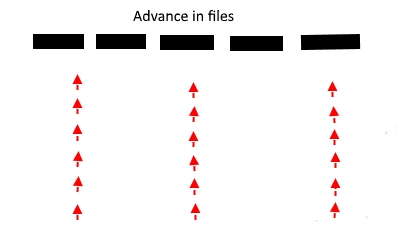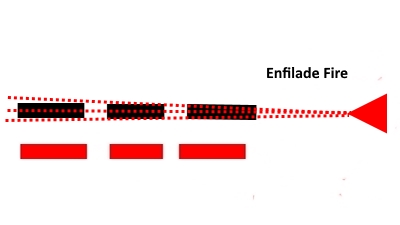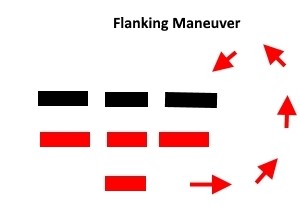Training Information: Key Canadian Military Terms
Ambush: carrying out a surprise attack on an enemy that passes a concealed position
Artillery barrage: a line or barrier of exploding artillery shells, created by continuous and co-ordinated fire of a large number of guns

Advance in file: advancing in a single file formation, each soldier following the one in front

Counterattack: as an enemy attack dies out, you launch your own attack before the enemy can restore their defensive position
Enfilade: a unit is "enfiladed" when enemy fire can be directed along the long axis of the unit. For instance, a trench is enfiladed if the enemy can fire down the length of the trench or along an entire line of attackers

Fighting withdrawal: pulling back military forces while maintaining contact with the enemy
Flanking maneuver: to attack an enemy or an enemy unit from the side, or to maneuver to do so

Frontal assault or frontal attack: an attack directed at the front of an enemy force
Leapfrogging: an attacking movement where one unit engages and pins down an enemy unit, and a second unit then moves through to attack the next position
Observer/Spotter: individual soldiers located in positions where they can see the effects of artillery fire and report targets and corrections
Patrolling/Reconnaissance: squads sent out ahead of the main force to identify terrain, land features and locate the enemy
Pickets: sentries or advance troops specifically tasked with early warning of contact with the enemy. A soldier who has this job is on "picket duty", and may also be referred to as a "lookout."
Pincer maneuver - attacking and surrounding an enemy by flanking attacks on both sides rather than by frontal assault

Reserve: units held back from an initial attack to be used to reinforce initial attacks, to continue the attack, or to prepare defensive positions in case of a failed attack